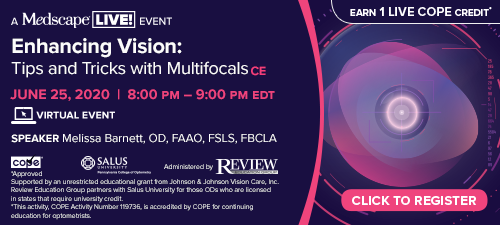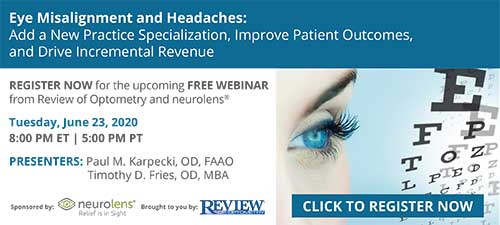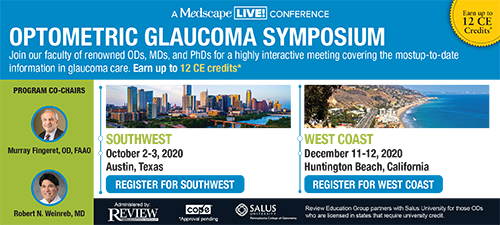
A
weekly e-journal by Art Epstein, OD, FAAO
Off the Cuff: The True Value of Continuing Education
A few weeks back I discussed the temporary changes in CE delivery models due to the COVID-19 outbreak. Reader response was overwhelming, and the clear consensus was online interactive education was here to stay or, at least, should be. That is something I will be working on, as I believe the need for credible distance learning is greater than ever and the technology is mature enough to support it. You will be hearing more soon. As you can imagine, I’ve been giving CE a lot of thought. I think many of us reflexively approach CE in the wrong way. Rather than seeing continuing education as a privilege and an opportunity to learn from some of the brightest minds around, many of us look at it as a burden, and a necessary evil. Some of this is understandable. Licensure requirements are rigid and sometimes needlessly overzealous. Being forced to sit in a stuffy cramped room for hours also isn’t pleasant or conducive to learning. Despite this, except for halfhearted attempts at integrating interactive technology, CE providers haven’t changed things in as long as anyone can remember. The more I thought about it, the more potential good I saw in CE. Beyond an opportunity to learn more about what you do for a living, CE provides insight into new techniques and procedures that can be integrated directly into the practice. In that sense, CE can have a huge economic benefit. Likewise, greater confidence generally translates into lower numbers of referrals to ophthalmologists and other providers so you can perform and benefit from what you can do yourself after appropriate training. One of the reasons optometry is excluded from some ophthalmology meetings is so that we can’t learn procedures that would position us to compete with their members. There are also medico-legal benefits. It’s been a while since I taught a course using malpractice cases as teaching points, but I can think of a number of colleagues who have shared that they have directly benefited from seeing others’ mistakes and avoiding them themselves. I could go on, but the bottom line is that continuing education has numerous benefits and the more accessible quality education is, the better for us, our patients and our profession. A lot more to come soon.
|
|||||
 |
||
| Ocular Manifestations of Coronavirus Disease 2019 | ||||
Coronavirus disease 2019 (COVID-19) is an ongoing global public health problem, and most of the COVID-19 research is focused mainly on the respiratory system because of life-threatening results. However, manifestations in other organs should not be ignored since they can also be a mode of transmission. Researchers sought to describe the ocular manifestations of COVID-19, and investigate the association between ocular involvement and clinical presentation and laboratory outcomes. This cross-sectional study was conducted between March 1, 2020, and April 30, 2020. Ninety-three sequentially hospitalized and clinically confirmed COVID-19 patients were included in the study. The systemic and ocular symptoms, clinical findings and laboratory outcomes were recorded. Of the 93 COVID-19 patients, 54 (58.1%) were male, and 39 (41.9%) were female. Mean age of the patients was 39.4 ± 21.9 (min 7, max 88) years. Twenty patients (n=21.5%) had at least one ocular abnormality. Most common findings included hyperemia (n=20), epiphora (n=9), increased secretion (n=6), chemosis (n=3), follicular conjunctivitis (n=2), and episcleritis (n=2). The most common symptom was photophobia (n=15). Patients with ocular involvement were more likely to have higher neutrophil counts, and increased CRP, PCT and ESR levels. Mean lymphocyte count was statistically lower in patients with ocular manifestations. Mean age and number of patients with fever over 37.3 °C in the ocular involvement group was found to be higher. |
||||
SOURCE: Bostanci Ceran B, Ozates S. Ocular manifestations of coronavirus disease 2019. Graefes Arch Clin Exp Ophthalmol. 2020 Jun 6;1-5. [Epub ahead of print]. |
||||
 |
||
| The Potential Application of Artificial Intelligence for Diagnosis and Management of Glaucoma in Adults | ||||
Glaucoma is the most frequent cause of irreversible blindness worldwide. There is no cure, but early detection and treatment can slow the progression and prevent loss of vision. It has been suggested that artificial intelligence (AI) has potential application for detection and management of glaucoma. This literature review was based on articles published in peer-reviewed journals. There have been significant advances in both AI and imaging techniques that are able to identify the early signs of glaucomatous damage. Machine and deep learning algorithms show capabilities equivalent, if not superior, to human experts. Concerns exist that the increased reliance on AI may lead to deskilling of clinicians. AI has potential to be used in virtual review clinics, telemedicine and as a training tool for junior doctors. Unsupervised AI techniques offer the potential of uncovering currently unrecognized patterns of disease. If this promise is fulfilled, AI may then be of use in challenging cases or where a second opinion is desirable. There is a need to determine the external validity of deep learning algorithms and to better understand how the 'black box' paradigm reaches results. |
||||
SOURCE: Campbell CG, Ting DSW, Keane PA, et al. The potential application of artificial intelligence for diagnosis and management of glaucoma in adults. Br Med Bull. 2020; Jun 10;ldaa012. [Epub ahead of print]. |
||||
 |
||
| Modeling of Gonioscopic Anterior Chamber Angle Grades Based on Anterior Segment Optical Coherence Tomography | ||||
Investigators quantitatively assessed anterior chamber angle (ACA) structure by anterior segment optical coherence tomography (AS-OCT) and developed a model to evaluate angle width as defined by gonioscopy. They evaluated the ACAs of each quadrant by gonioscopy, classified by the Scheie grading system, and assigned the angles into one of the three grades: small angle (SA), moderate angle (MA) and large angle (LA). The eyes were imaged by AS-OCT, and ACA structural parameters—including angle opening distance at the scleral spur (AODSS) and at 750 μm anterior to the scleral spur (AOD750), trabecular-iris space area at 750 μm anterior to the scleral spur (TISA750) and a newly defined parameter "light intersection distance" (LID)—were measured. The ACA structural data were used to construct an ordered logistic regression model for assignment of ACAs to one of the three angle grades. The validity of the model was then tested. |
||||
SOURCE: Dai Y, Zhang S, Shen M, et al. Modeling of gonioscopic anterior chamber angle grades based on anterior segment optical coherence tomography. Eye Vis (Lond). 2020;7:30. eCollection 2020. |
||||
 |
||
| News & Notes | ||||||||
| AAOF Names Joe and Janet Barr Early Career Cornea and Contact Lens Research Award Recipient The American Academy of Optometry Foundation announced the recipient of the Joe and Janet Barr Early Career Cornea and Contact Lens Research Award is Sidra Sarwat, a first-year PhD candidate at the School of Optometry and Vision Science, University of New South Wales in Kensington, Australia. Read more. |
||||||||
|
||||||||
| J&J Vision Introduces Acuvue RevitaLens Multi-Purpose Disinfecting Solution in Canada, to Present Myopia Clinical Research Findings from SERI & SNEC Collaboration and Myopia Progression Findings from Study on Children, at ARVO Annual Meeting J&J Vision unveiled the first extension of the Acuvue brand name beyond contact lenses with a launch in Canada of Acuvue RevitaLens Multi-Purpose Disinfecting Solution. The solution is designed to deliver exceptional disinfection and all-day comfort for reusable contact lens wearers. Its dual-disinfecting formula is intended to be gentle on the eyes but tough on harmful germs and bacteria. Read more. In addition, the company will present clinical research findings from its myopia clinical research program with the Singapore Eye Research Institute (SERI) and Singapore National Eye Centre (SNEC), as well as new data on contact lens and surgical innovations, at the Association for Research in Vision and Ophthalmology Annual Meeting, which is being held as a virtual congress. Presentations will be published on June 15. View studies and author videos here. The company also announced clinical research findings on myopia progression in children, and child myopia screening and education progress in the Asia Pacific region. View the study abstract.
|
||||||||
| BostonSight President & CEO Appointed to GP Lens Institute Board BostonSight, a nonprofit eye healthcare organization and research center dedicated to saving sight and improving quality of life for patients across the US, announced that President & CEO Sara Yost, was appointed to the board of directors of the GP Lens Institute (GPLI). Yost’s appointment reinforces BostonSight’s industry leadership in education and development of practice-building resources for eye care practitioners. |
||||||||
|
Optometric Physician™ (OP) newsletter is owned and published by Dr. Arthur Epstein. It is distributed by the Review Group, a Division of Jobson Medical Information LLC (JMI), 19 Campus Boulevard, Newtown Square, PA 19073. HOW TO ADVERTISE |



